Look for your nearest Illinois Natural Areas Inventory site or Illinois Nature Preserve.[1] Make the call whether or not to trespass if it looks like private property. Plug it in your GPS and hit the road. Near the preserve, your parking spot is preferably near some houses or tucked out of the way so that your vehicle does not attract suspicion. Carry identification and a friendly smile for police officers who stop to ask what you are doing. You will be stopped if you do this frequently enough.

Today you settle on Arlene Shoemaker Flatwoods in Kane County. It is public land, based on a map you found on the forest preserve’s website.[2] It is February in Chicagoland, and it has just snowed about a foot, so break out the winter boots and gaiters. Put your camera around your neck and start the GPS track – you’ll stitch the two together later to map what you saw where.[3]
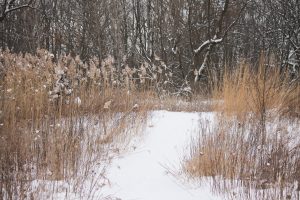
Step from warm car to plowed pavement to fresh, deep snow. Walk past the de novo habitat restoration project/stormwater basin, noting the typical Ratibida pinnata, Pycnanthemum virginianum, Monarda fistulosa, Sorghastrum nutans, Andropogon gerardii, and also the usual offenders Dipsacus laciniatus, Phragmites australis, Phalaris arundinacea. Reach the wooded edge and find Elaeagnus umbellata, Rhamnus cathartica, Celtis occidentalis, Prunus serotina, and Tilia americana. Wonder if there is a way to distinguish Tilia americana var. neglecta from the typical form besides the forked abaxial hairs.[4] Try to get your stubborn mind to recall the differences between agrimonies. Cheer on several baby oaks.
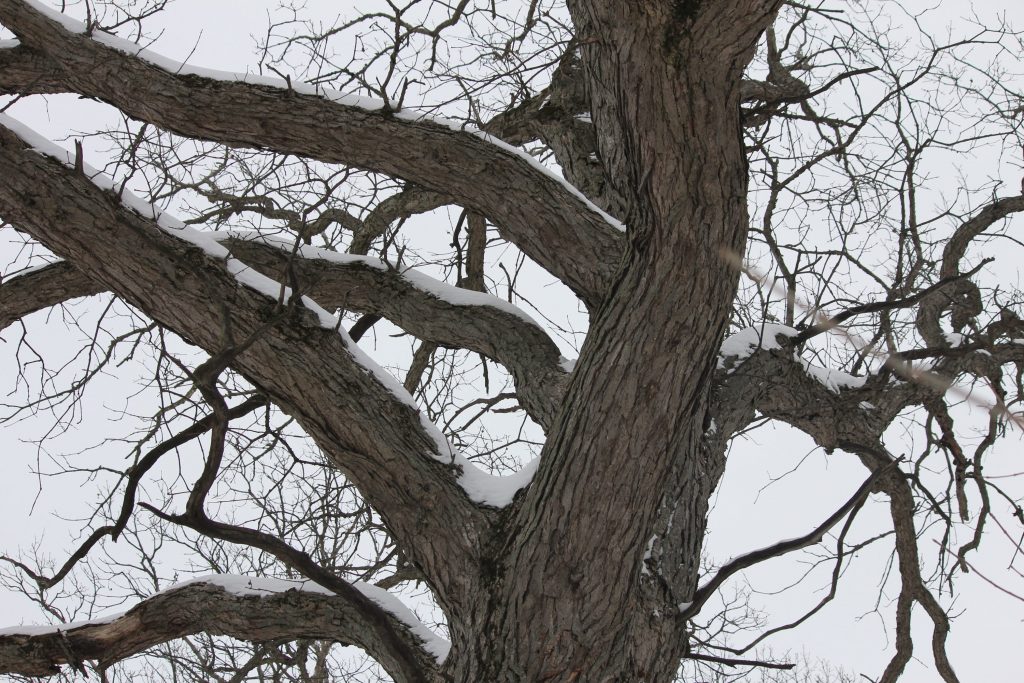
Enter the oak cathedral. Your heart glows a little under the swamp white oak canopy. A million thigh-high ash saplings litter the floor. Walk toward buttonbush and feel the change with your toes from dirt to ice. Along the edge of the future-pond, bust open some Carex sect. Lupulinae perigynia and decide the knobs just aren’t knobby enough (or, the nipples just aren’t nipply enough) for C. lupuliformis and so settle with C. lupulina. Recall you’re meant to broaden your knowledge base beyond plants, and check some Trichaptum biforme (violet-tootled polypore) for the presence of Phaeocalicium polyporaeum lichens (no-go).[5]
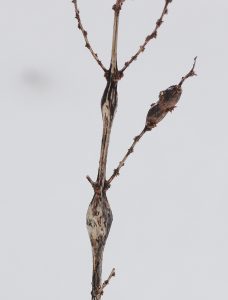
Notice some stem protuberances on false nettle, and learn they are galls of Neolasioptera boehmeriae. Later discover a long-time iNaturalist friend had found the exact same species, a day earlier, in Ohio. These are the only two observations of this species on iNaturalist and the number of images of these galls on the internet has now more than doubled based on these two little datapoints.
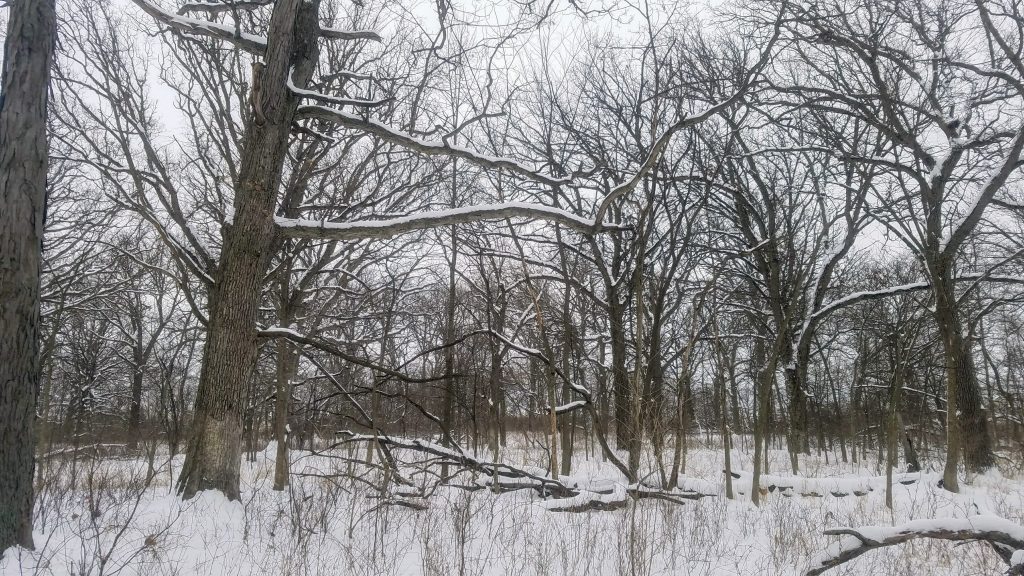
Reach the end of the buttonbush pond where the white oaks and shagbarks gather. Wish the spring ephemerals weren’t quite so ephemeral so that you could capture their winter bones. Moving north, enter a wet field with some puzzling assemblages with so much Pycnanthemum and decide to visit again in the spring. Find a lonely Penthorum sedoides peeking out of the snow.

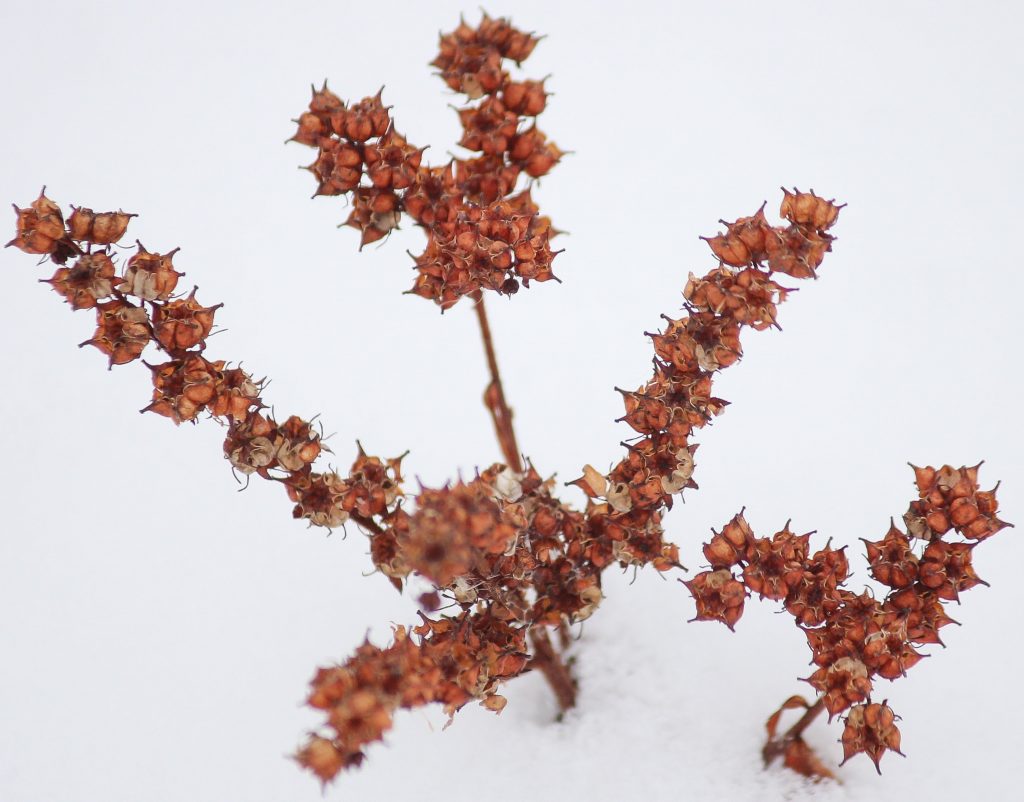
Try to take a different way back. Laugh as you try and fail to fight your way through thick buttonbush swamp. Out of the woods, pass the teasel and reed canary and phragmites and burdock and bull thistle and hidden bluegrass under the snow. Stomp your feet and set the GPS for home.
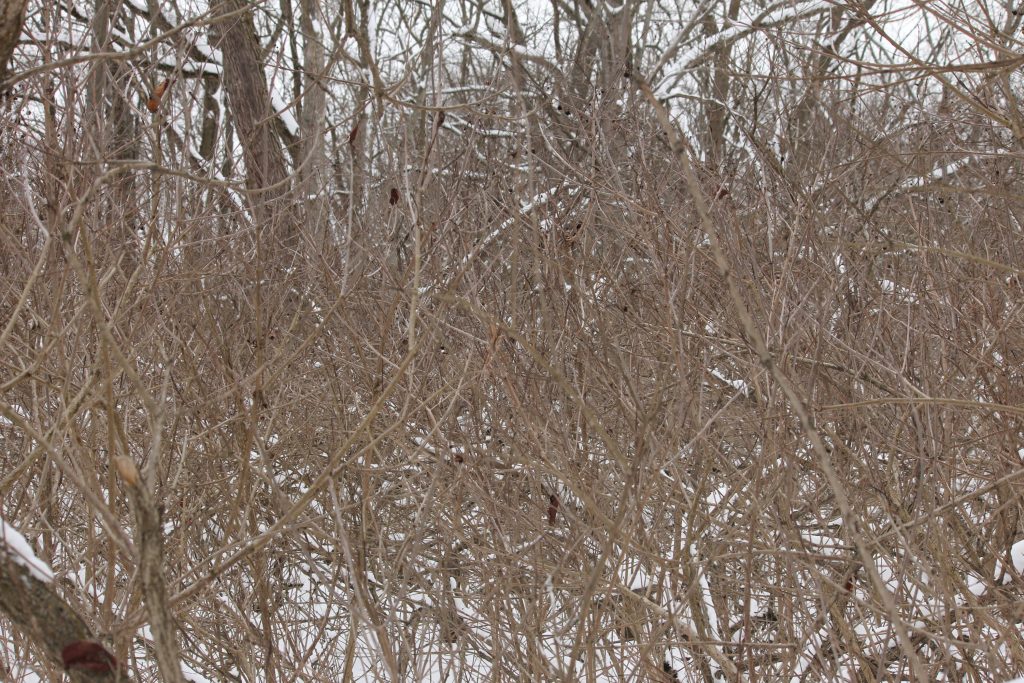
View all observations from Arlene Shoemaker Flatwoods on iNaturalist
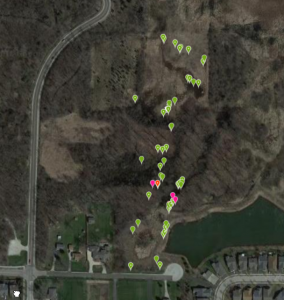
Footnotes
1. On the Prairie i-View map, make sure to uncheck all of the layers except for Illinois Natural Areas Inventory (halfway down the list) and Illinois Nature Preserves Commission (bottom of the list) (jump back up)
2. Here is the Kane County map of Arlene Shoemaker Forest Preserve, which includes the INAI site and their other non-INAI lands. It is not hatched green on Google Maps, so it may as well not exist, and there did not appear to be any dedicated trails throughout the eastern portion of the site, save deer trails. (jump)
3. There’s a great iNaturalist how-to video for geotagging your photos with Lightroom (there are other free options out there) (jump)
4. Per Wilhelm & Rericha 2017, with example here: https://www.inaturalist.org/observations/6966289 (jump)
5. Dr. Wilhelm has recently published a draft version of his Lichens of the Chicago Region, available on the Conservation Research Institute website. (jump)
“Walk toward buttonbush and feel the change with your toes from dirt to ice”…. My favorite line… Says so much without saying it…. Love the mental thoughts writing style
I enjoyed this post very much. I like that you encourage people to explore off of pre-prepared trails. I like the attention to scientific detail and encouragement of others to learn more. Finally, the writing is imaginative and engrossing.
Very inspiring and makes me want to go outside and explore a wild area this winter
Ahh winter. no poison ivy. Someday I will share your journey here.
*sigh* I wish I’d known you when we lived in Chicago. Please come visit again soon!
“Make the call whether or not to trespass if it looks like private property.” Always know when you’re trespassing because trespassing doubles the fun! “Carry identification and a friendly smile for police officers who stop to ask what you are doing. You will be stopped if you do this frequently enough.” Um, I don’t carry the ID card, and I’ve been in the crime report for suspicious activity lurking around back roads…